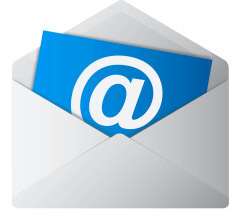Best Ways to Advertise Your Freelance Writing Business
Introduction
 Advertising can mean direct marketing which consists of sending out sales
letters, brochures, flyers, or post cards to prospective clients. Placing
advertisements for your business in business magazines, websites, newspapers can
be very effective. Passive advertising is another method including setting up a
website or blog and letting customers find you. Advertising can mean direct marketing which consists of sending out sales
letters, brochures, flyers, or post cards to prospective clients. Placing
advertisements for your business in business magazines, websites, newspapers can
be very effective. Passive advertising is another method including setting up a
website or blog and letting customers find you.
Advertising works best if you speak the language of your target market and
contact them regularly. Once you have a reputation and get to know what
companies need your services, business becomes easier to conduct.
Direct mail is an option to find your customers. You can print up a nice
brochure and mail it out to every company that you think might be interested in
your services. But then the question is "who do you send it to?" If your
mailings aren't addressed to a specific person, you're taking a gamble as far as
if it reaches the right person. Most of the time direct mail is unsuccessful.
Considering the cost of designing, printing, addressing, and mailing a brochure,
it's a costly way to do business. Even if your brochure ends up in the right
hands, there's generally about a one to two percent chance that it will be acted
upon.
Marketing collateral is the term used to describe a collection of materials
that you use to advertise your business. Marketing collateral might include
brochures, postcards, newsletters, white papers, and more. Let's look at some
advertising activities in more depth:
Placing an Advertisement
Some writers advertise in their local business magazines and get good results,
but this can be expensive especially when you're first starting out. In
addition, people generally believe news stories more than they do ads. This
means that it's far better to put in the effort to have stories written about
business than to advertise it.
Brochures
 Brochures can be powerful marketing tools but as mentioned above, they can be
expensive to mail. A great brochure will educate customers about the benefits of
doing business with you, establish your credibility, and be a lasting reminder
of your business. Brochures can be powerful marketing tools but as mentioned above, they can be
expensive to mail. A great brochure will educate customers about the benefits of
doing business with you, establish your credibility, and be a lasting reminder
of your business.
You definitely should have a brochure describing your business. In fact, you
should have at least a couple of brochures, each describing your business from a
slightly different slant. In addition, you should have follow-up letters that
you send your potential clients that focus upon individual services that you
offer. Why so many? Because you generally have to put your name in front of your
potential clients at least five or six times before they feel comfortable enough
to call you.
When you're writing your brochure copy, remember that customers won't be
buying your services. They'll be buying the benefits that your services offer
them. Those benefits might be a fresh approach, help during crunch times,
specialized expertise, or flexibility. Focus on offering solutions to your
customers’ needs in your brochure. Think about placing a statement or question
that sums up the benefits you can provide for your customers on your front
cover.
Postcards
Postcards are great for marketing. They're small, easy to design, and cheap to
mail. In addition, people often read postcards while they may not take the time
to open an envelope and read a letter.
Additionally, postcards are a great way to remind your clients and serves as
a quiet method of contacting them an additional time. One postcard campaign
might be sending clients useful tips, one tip per postcard, one postcard a week
for several weeks. You can send your clients a writing tip a week or tips about
using a software application they typically use every day. Let your imagination
run wild when thinking of tips that you can send your clients. Make it clear
that they'll be receiving a postcard a week and how many weeks they will receive
these tips. Make your postcards fun and relevant. Be sure to include your logo
and contact information. Don't be surprised when your clients tell you they look
forward to receiving the tips and even save them for future reference.
Newsletters
Sending clients a monthly, quarterly or semi-quarterly newsletter is another
good way to market your business and your expertise. Newsletters give you the
opportunity to put your name in front of your clients and potential clients,
while at the same time building your reputation as a professional.
Blogs
Blogs (web logs) have quickly become effective tools for new and established
businesses. More and more my students are telling me that they're finding jobs
as a result of starting their blogs. Even when they weren't even looking for
work!
Even if you have a website consider starting a blog. A blog offers an easy
way to let your potential and existing customers respond to posts, share
comments, ask questions, and even promote themselves. All of these interactions
increase the chances that visitors will return to your site.
Blogs are easier to set up than websites and can be very inexpensive. You can
set up a blog for free on the Internet, and use it to drive traffic to your
business website.
Social Media
 Facebook, Twitter, LinkedIn, and other social media sites offer yet more ways to
become known on the Internet. You can open accounts for free and work to gain a
following. You can even get into advertising and pay for ads that will appear on
other people’s pages. Facebook, Twitter, LinkedIn, and other social media sites offer yet more ways to
become known on the Internet. You can open accounts for free and work to gain a
following. You can even get into advertising and pay for ads that will appear on
other people’s pages.
You can use these types of sites in several ways, depending on your goals. If
you're trying to make business contacts, consider joining social media
communities that are focused on building business contacts such as LinkedIn. If
you are planning to offer services to individuals such as training courses or
seminars, Facebook might be a good choice.
Whatever communities you choose to join, always be aware that whatever you
say on your pages may be viewed by people other than the group you intended.
More than one person has been burned by indiscreet posts on their social media
pages. Don't divulge information about your clients or say anything that might
be interpreted as disrespectful about anyone. Even If you don't "name names," it
usually doesn't take much of a stretch for people to figure out who you're
talking about.
Emails
 As you collect email addresses of customers and potential customers, you might
consider sending emails to them to tell them about your products and services.
You might even be tempted to use emails instead of postcards to stay in touch
with your customers. As you collect email addresses of customers and potential customers, you might
consider sending emails to them to tell them about your products and services.
You might even be tempted to use emails instead of postcards to stay in touch
with your customers.
While email marketing can be very effective, I recommend that you tread
lightly here. People are very sensitive about receiving spam emails. In all of
your marketing efforts, strive to set yourself apart. Present a consistent,
professional image that your clients can easily recognize. Coordinate the look
of everything associated with your business. Use the same colors and images on
your business cards, website, brochures, and all other forms of corporate
communication. If you do this consistently for a period of time, pretty soon
people will think of you whenever they see your logo and hopefully remember that
they'd been meaning to call you about starting a new project!
Don't Let Them Forget You
Remember how I said that you often have to contact people several times before
they do business with you? Well even after you've done a job for them, even if
they were thrilled with your work, you may have to remind them of who you are in
a few months' time if they haven't been providing you with a steady stream of
work.
So how do you do that? Well, you don't want to call them and whine about how
they haven't been giving you any work. But you can remind them of you by telling
them about some aspect of your business that you want to feature.
Try to find a way to do this at least every other month. Postcards work well
for this. When you're designing these postcards, be creative and come up with a
good design that you will want to stick to. Use this as your template
periodically changing the message, or perhaps moving some of the design elements
slightly. This is a form of branding. You want the design to be eye-catching
enough that the client picks it out of his or her mail the first time it comes
around. From then on, you want them to pick it out because they remember that it
came from you.
Business
15 Cases of Extreme Brand Protection
15 Interesting Things You Should Know about Amazon.com
Top 15 Low-Budget Business Ideas
15 Interesting Facts about Walmart
5 Business Email Personality Types - Which One Are You?
Dreaming Your Business Team to Success
How to Turn a 'No' Into a 'Yes' For Business Sales
15 Projects That Started as a Joke and Ended Up Successfully
Mastering The Art Of Delegation Leadership
How To Set Business Goals And Objectives
How to Properly Motivate Your Employees
The Importance of Video Surveillance in the Workplace
Starting Your Own Business: Important Things to Know
Best Ways to Advertise Your Freelance Writing Business
The Power of the World Wide Web for Business
Starting Your Own Business: Important Things to Know
How to Set Up a Home Office
How to Accept Credit Card Payments Online on Your Website
The Advantages of Online Franchise Business
Basics of Marketing Plans for Small Business
|